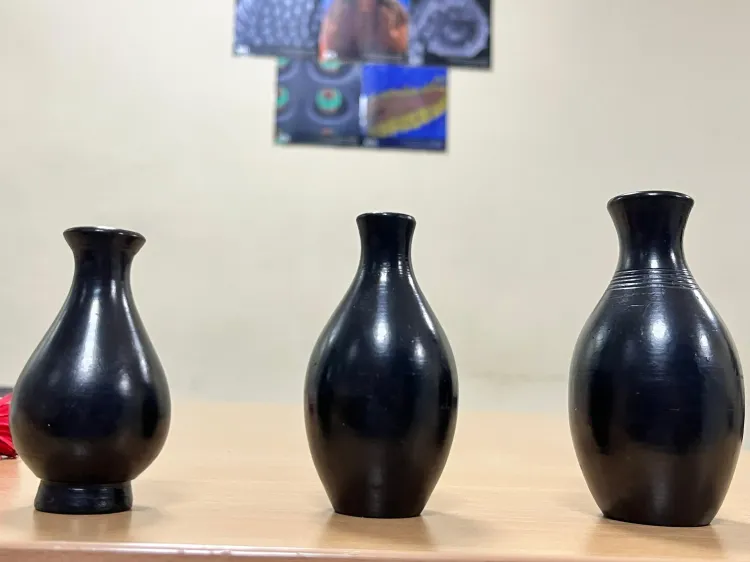Can NIT Rourkela's Innovative Green Technology Revitalize India's Black Terracotta Craft?

Synopsis
Key Takeaways
- Innovative production method reduces firing time significantly.
- Minimizes harmful emissions and promotes environmental health.
- Protects workers from toxic exposure.
- Combines traditional craftsmanship with modern technology.
- Supports cultural heritage and artisan communities.
New Delhi, Nov 17 (NationPress) Researchers at the National Institute of Technology (NIT) Rourkela have pioneered a green method for crafting black terracotta wares. This patented sustainable production technique significantly reduces the firing duration from two days to under seven hours, all while ensuring the health of workers and safeguarding the environment, the Institute stated on Monday.
The traditional method of production often necessitates a full two-day open-pit firing cycle, which emits harmful smoke containing toxic gases such as carbon monoxide, carbon dioxide, sulfur oxides, and nitrogen oxides, posing severe health risks to workers, including respiratory issues.
“Our sustainable production method integrates traditional artisan techniques with cutting-edge technology. The crucial aspect of the process involves the indirect heating of the crafted bodies within a sealed vacuum chamber,” explained Prof. Swadesh Kumar Pratihar from the Ceramic Engineering Department at NIT Rourkela.
“This heating process facilitates pyrolysis of the carbonaceous oil, generating carbon monoxide and carbon soot, which contribute to creating the necessary reducing atmosphere for achieving the desired black color in the wares,” he added.
This innovative approach yields a consistent black finish and eliminates the need for open flames, skilled labor, or specialized clay.
By significantly shortening the firing cycle and reducing environmental pollution associated with burning large amounts of organic materials, this novel technique could serve as a transformative technology for producing black terracotta wares across various locations.
The method not only aids in environmental conservation but also plays a vital role in preserving cultural heritage.
In India and its neighboring regions, black pottery is traditionally crafted using age-old methods. A prime example is the Nizamabad Black Pottery from Uttar Pradesh, where semi-finished wares are coated with a glaze made from local clay and organic materials known as “kabiz.”
After polishing with mustard oil to achieve a mirror-like finish, the pottery is fired in a sealed iron vessel with cow dung, straw, and wood chips.









